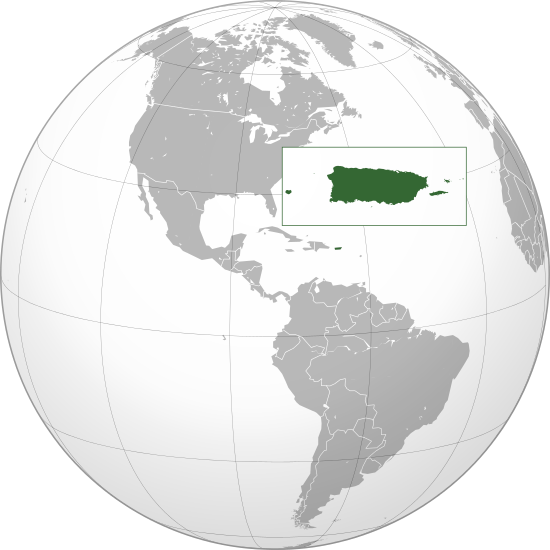Puerto Rico (USA)
AT A GLANCE
Name: Puerto Rico means “rich port” in Spanish.
Capital: San Juan
Size: 3,515 sq. mi. (9,103 sq km)
Population: 3,474,182(2015)
Statehood: Unincorporated
Electoral votes: 0
U.S. Representatives: 1 (nonvoting)

THE PLACE
Puerto Rico is an island about 1,000 miles (1,600 km) southeast of Florida, between the United States and South America. Puerto Rico also includes many smaller islands; the largest are Vieques, Mona, and Culebra. Puerto Rico lies partly in the Atlantic Ocean and partly in the Caribbean Sea.
Puerto Rico has fertile soil, a subtropical climate, and sandy beaches. The island has regions of low land, valleys, and foothills, and the Cordillera Mountains cross southcentral Puerto Rico. Puerto Rico's climate is humid in many places, and some areas experience powerful storms daily. During the summer and fall, hurricanes can cause serious devastation. Mild ocean breezes keep summer temperatures in Puerto Rico relatively cool.
THE PAST
Puerto Rico is the island on which Christopher Columbus first landed in 1493, during his second voyage to North America. Columbus claimed Puerto Rico for Spain, and it remained a Spanish possession until 1898, when Spain surrendered Puerto Rico to the United States at the end of the Spanish-American War.
In 1917, Congress passed legislation that made Puerto Ricans citizens of the United States, and in 1947, the U.S. government allowed Puerto Rico to elect its own governor. Puerto Rico wrote its own constitution in 1950, and became a self-governing commonwealth in 1952. Although Puerto Ricans are U.S. citizens, they cannot vote in presidential elections. They elect one representative to the U.S. Congress, but this representative can vote only in committees.
At around the same time, many Puerto Ricans moved to the U.S. mainland to find better job opportunities. This migration slowed during the 1960s and 1970s, when Puerto Rico experienced tremendous industrial growth. In both 1993 and 1998, Puerto Ricans voted to remain a commonwealth of the United States instead of becoming a state or an independent country.
THE PRESENT
Manufacturing is Puerto Rico's chief industry, and factories produce pharmaceuticals, processed sugar, electrical equipment, machinery, and clothing. Livestock products include milk, poultry, and beef, while farmers grow coffee, pineapples, bananas, sugarcane, avocados, and coconuts. Fishing is another important industry, with an annual catch valued at around $21 million.
Tourism is the secondmost developed industry on the island; every year millions of vacationers come from the U.S. mainland and other countries to visit Puerto Rico's white, sandy beaches and to experience the island's unique Hispanic culture.